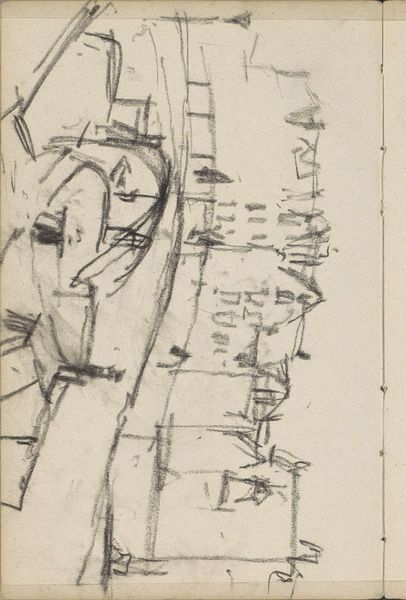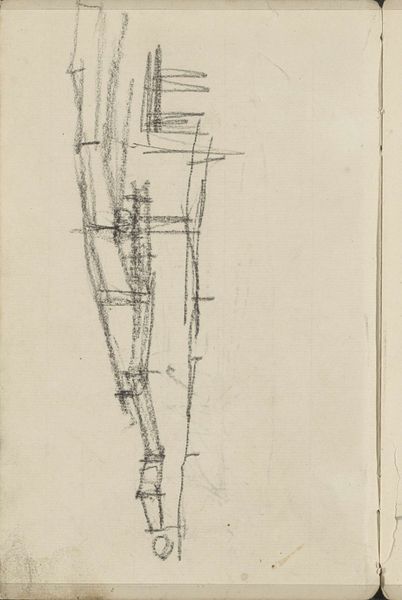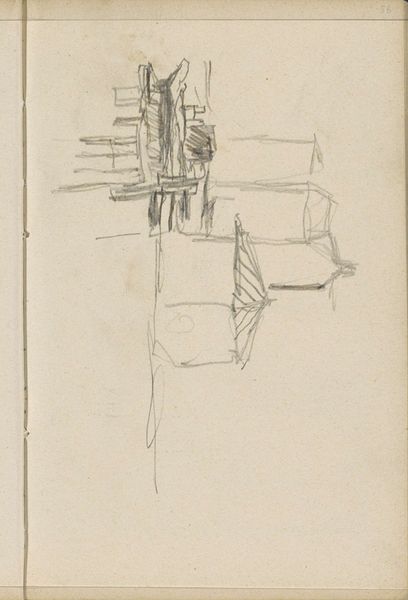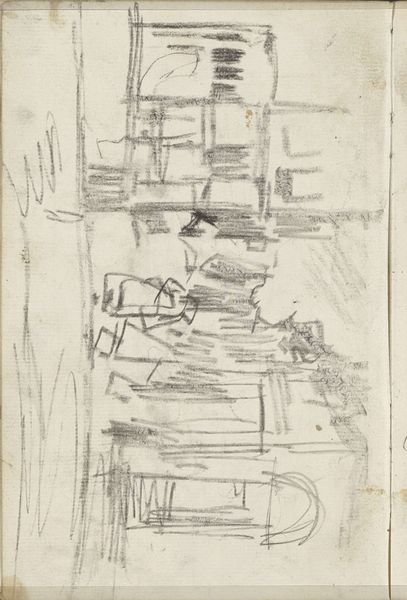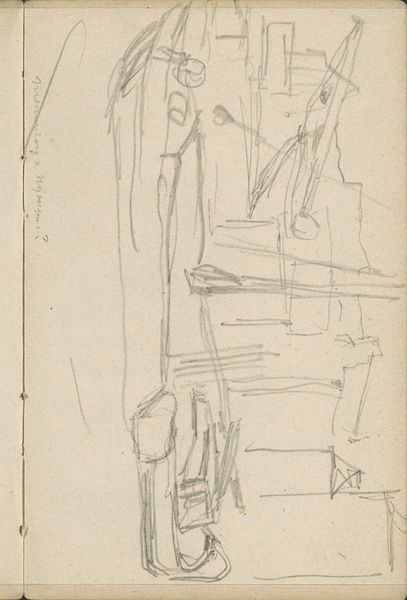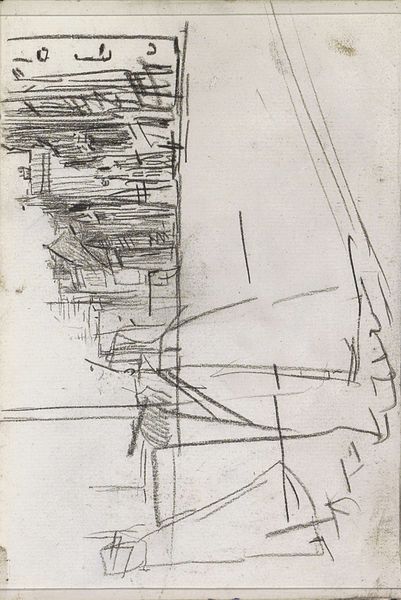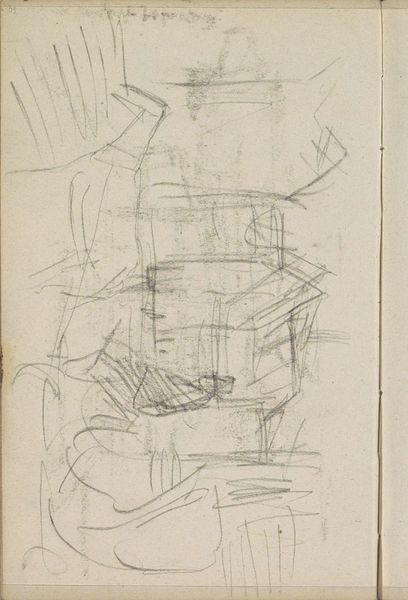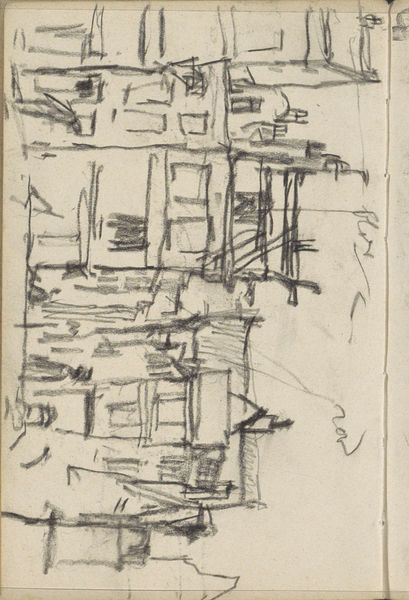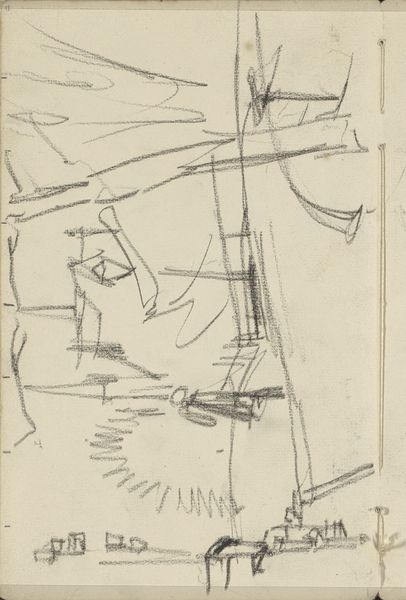
Copyright: Rijks Museum: Open Domain
Curator: This evocative drawing, entitled "Gezicht in Amsterdam, mogelijk het Rokin," or "View in Amsterdam, possibly the Rokin," is by George Hendrik Breitner. We believe it dates from between 1900 and 1923, and was created with graphite. It offers a fascinating glimpse into city life. Editor: My immediate impression is one of transience and perhaps a slightly melancholy air. The stark graphite on paper creates a sense of something fleeting, a captured moment slipping away. Curator: Breitner, known for his engagement with urban scenes, positioned himself amidst the rapid transformations of Amsterdam during this period. His art captures the dynamism and challenges of a burgeoning modern city, much like what writers like Emile Zola did in Paris. Editor: The Rokin itself holds significance, doesn't it? A vital waterway undergoing change. I can't help but think of the canal's transition, both physically and symbolically. The water, traditionally a source of life and commerce, now reflects the altered face of the city, carrying undertones of industrial progress but also possible loss. Curator: Precisely. Breitner's choice to portray a 'possibly the Rokin' allows for wider interpretations. It invites the audience to contemplate the broader narratives of change and identity tied to the city's landscape. We often examine Breitner through the lens of impressionism. His unique mark-making helps frame the sociopolitical atmosphere during a dynamic chapter of the Dutch capital's development. Editor: The architectural details are also really striking. Notice how they seem to both solidify and dissolve into each other. It’s like memory itself, present, yet fading. The graphite strokes aren’t just lines; they embody the passage of time. It is interesting to wonder if there were particular spots in Amsterdam that appeared more "themselves" to the locals, given the shifting social environment, the feeling of 'home' perhaps represented through some particular structure or element within the architecture? Curator: An interesting interpretation of how personal experience intertwines with collective perception. I hadn’t considered it in such a subjective way, but you’ve definitely provided a more emotional approach. Editor: In closing, it becomes clear how Breitner compels us to ponder the lasting traces that both architectural forms and social changes impress upon our cultural memory. Curator: Indeed. Breitner encourages a dialogue between the visual representation of the city and the subtle indicators of its transformation, and its effects on social transformation, during his time.
Comments
No comments
Be the first to comment and join the conversation on the ultimate creative platform.
